
Anaerobic Digester
The Ontario government has recently been emphasising its green credentials, particularly in relation to small-scale renewable generation, in the run up to a provincial election this fall. The Standard Offer Program (SOP – previously discussed here) is claimed to provide a framework for bringing a substantial array of new embedded generation on to the grid – generation based on different energy sources and varying widely in size. This is exactly what needs to happen if Ontario is to avoid a painful energy squeeze in the future, due in part to the approaching decline of natural gas supplies in North America. However, achieving it is proving to be far more difficult than one might reasonably expect.
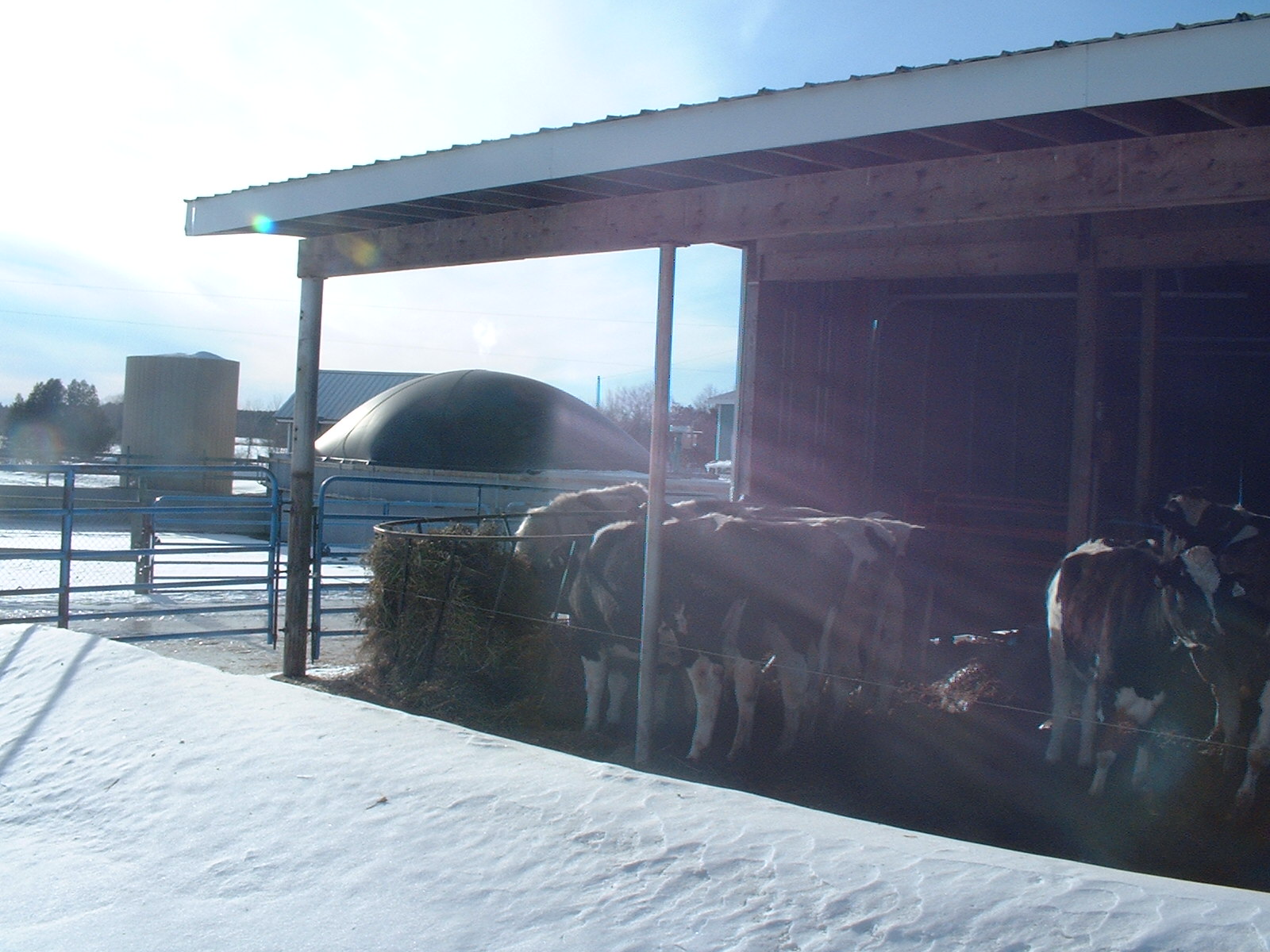
The Regulatory Landscape
The Ontario Power Authority (OPA), which administers the SOP is clearly intent on minimising the cost to Ontario electricity consumers by strongly favouring the cheapest renewable alternative. However, this position is at odds with the priorities of other government agencies, notably the Ontario Ministry of Agriculture, Food and Rural Affairs (OMAFRA), which is keen to promote various forms of farm-based generation as a means of securing rural development. In addition, the Ministry of the Environment (MOE) has its own priorities, which are not necessarily in accordance with those of other agencies. Zoning and taxation are also issues. The net result is the development of a regulatory obstacle course threatening to derail the development of valuable technologies such as anaerobic digestion. Given the considerable collateral benefits of agricultural biogas production, such an outcome would represent a significant own-goal.
The Benefits of Anaerobic Digestion

Anaerobic Digestion

The Importance of Total Solids Content
Anaerobic digestion (AD) is well established in Europe and is increasingly being developed in America (see for instance the Agstar Handbook and software from the US EPA or this Minnesota case study). In combination with power generation from the resulting biogas and waste heat recovery, it has significant potential for recovering energy from agricultural operations in Ontario. Approximately 4-5 kWh per milking cow per day (equivalent to 2-3 kWh per head of dairy livestock per day) can typically be generated, meaning most farmers for whom it would be economical to install a system would be able to cover their own electricity demand with a surplus available to feed into the grid. In winter, the recovered heat would also typically be sufficient to provide for all the heating needs of the farm, including heating the digester itself in order to maintain the required temperature range.
AD also has a number of important collateral benefits that have made its development a priority for the farming community.
- Improved manure management
- Pathogen reduction (typically 95% or more)
- Reduced greenhouse gas emissions (methane, nitrous oxide)
- Reduced odour (90% reduction of VFAs)
- Chemical fertiliser substitution
- Rural economic development
- Treatment of off-farm organic waste streams as co-substrates
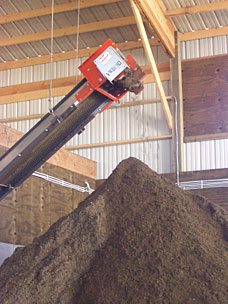
Digested solids
Combining digestion of manure with other wastes – green waste, commercial food waste, waste fats and oils, grease trap residues – can enhance methane production, typically by up to a factor of four. The surplus power available for sale is therefore greatly increased and the economics of the project substantially improved. At present, farmers may also be offered a tipping fee to take off-farm materials (tipping fees currently paid for composting or landfill are $40-$90 per tonne), although that is unlikely to continue once there is competition for energy-rich waste streams. AD of these off-farm waste streams is a very much better option than the landfilling, which often occurs now.
According to OMAFRA, a fully developed AD sector is predicted to result in $1.4 billion of investment in Ontario agriculture and infrastructure, with an anticipated $434 million in annual income for farmers in exchange for generating 2% of Ontario’s power demand. However, a string of bureaucratic obstacles stands in the way, and is proving to be a huge source of frustration for early adopters and their backers.
Grid Connection Obstacles
For projects under 50kW which are planning to net meter, the connection process is straightforward, however, most AD systems, including any based on co-substrates, would be larger than this. For larger systems, the process of establishing a grid connection is extremely long, complicated and expensive. Although time-scales are set by the Ontario Energy Board (OEB) in the Distribution Code – 15 days for an initial feasibility study and 60 days for a Connection Impact Assessment (CIA) and Connection Cost Estimate (CCE) for generation less than 500kW – these time-scales are not even close to being met, partly due to the avalanche of applications resulting from the dash for wind under the SOP. Projects currently submitting an application to Hydro One – the relevant utility in almost all cases as it deals with rural Ontario – can expect to wait for months before their application will be assessed.
The initial feasibility assessment is free, but the CIA costs in excess of $3000 and the CCE in excess of $4000. After completion of the CIA and CCE, a cost recovery agreement will be offered, based on deep entry. In other words, the prospective generator is liable for the full cost of all necessary distribution system upgrades, however far downstream these may occur, and however disproportionate they may be to the economics of the project. Once the necessary upgrades have been performed and paid for, which could potentially extend the timeline considerably, a connection agreement would be offered.
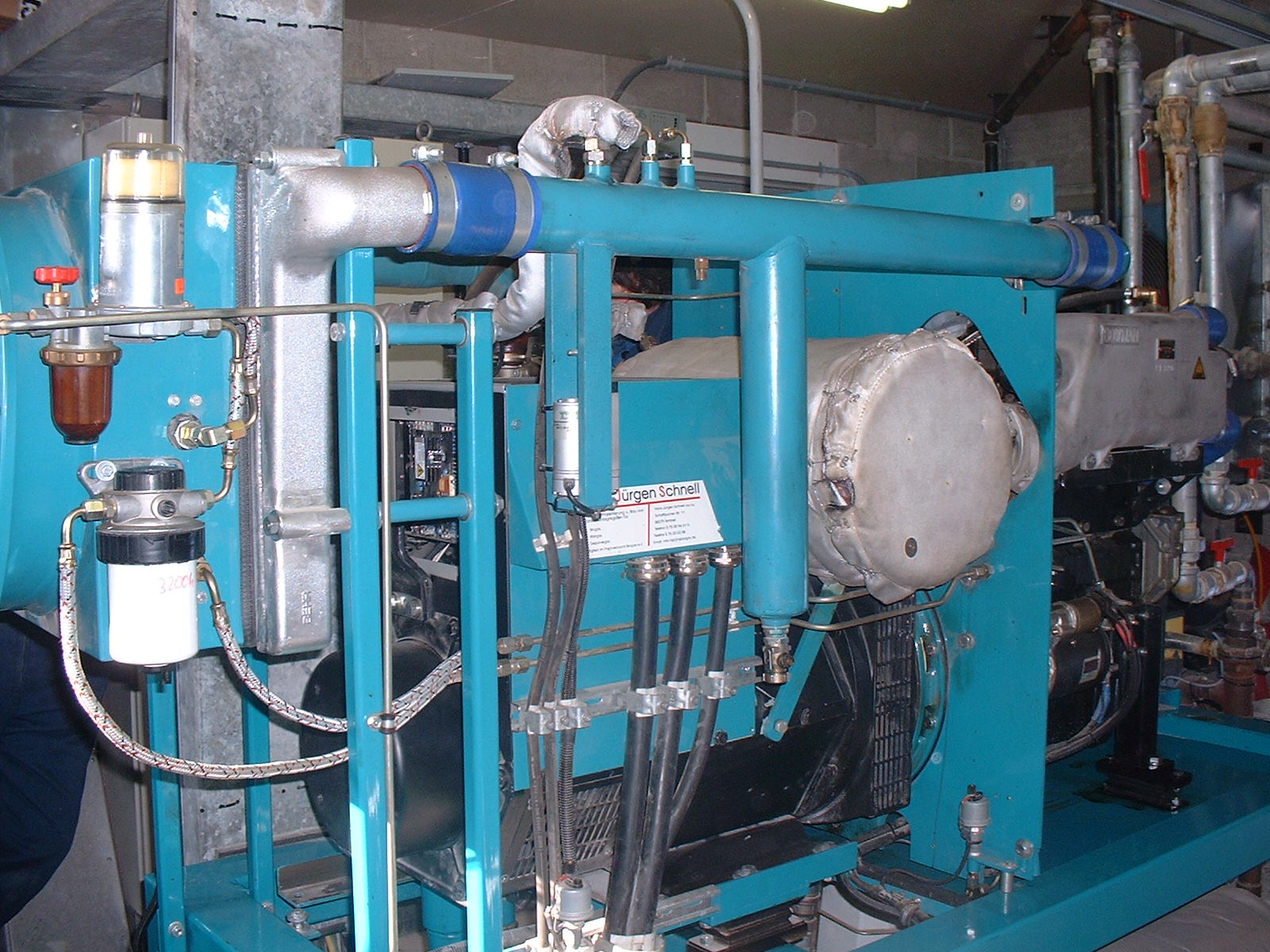
Hydro One is legitimately concerned about the potential for islanding, for which the standard solution would be a $200,000 transfer trip scheme to ensure that feeder lines are not energised when power is restored after a momentary outage (the typical restoration time is approximately 1 second). If a feeder line is energised and significantly out of phase on reclosure, equipment damage is on the feeder side is a distinct possibility. This problem could potentially be addressed by increasing the reclosure time – to perhaps 5 seconds – in order to ensure that the embedded generation would have sufficient time to disconnect. Hydro One has so far been disinclined to do this, however, as restoration time appears to be one of their reportable performance measures. Insisting on a transfer trip instead for a $300,000 farm-based AD project, would render almost all such projects uneconomic.
A working group has been set up between the Ontario Federation of Agriculture (OFA) and Hydro One to discuss ways of moving forward, but solutions will take time.
Power Purchase Obstacles
Embedded generation with a two-way connection to the grid can choose to net meter or to sign a 20-year contract under the SOP. Net metering would not be an attractive option for a generator commonly out-producing his own demand, as any surplus power would have to be put on to the grid for free. Most prospective biogas generators are hoping to sign a SOP contract, but the rate currently being offered is not attractive.
Critics of the SOP point out that the program is essentially designed for commercial wind power as the lowest cost form of renewable energy. Although the SOP rate of 11 cents per kWh is supplemented by 3.52 cents per kWh during peak period – a supplement for non-intermittent generation – the overall price still averages out at only about 12.5 cents per kWh. OMAFRA’s work suggests that an effective price of 13-22 cents per kWh, depending on the project, is required to make AD economic under prevailing conditions in Ontario. The OPA is said to be considering a price review within two years, which could significantly disadvantage early adopters. In practice, potential AD generators may well decide to wait for the price review before committing themselves to a 20 year contract, which could substantially delay the adoption of AD technology.
Renewable generation projects may be eligible for additional incentive programs intended to enhance their viability – for instance the proposed federal eco-energy renewable power program which would provide an additional cent per kWh for renewable generators larger than 1 MW. However, under the SOP contract, the provincial OPA is able to claw back half of any such incentive. This form of regulation at cross-purposes adds pointless complication to the process.
An additional complication is the demand charge for demand customers using more than 50kW. Whereas smaller demand customers pay an energy charge, a fixed charge and a distribution charge proportional to their energy use, larger customers pay an energy charge, a fixed monthly component and variable amount proportional to their peak power consumption rather than their energy use. The variable component is referred to as the demand charge.
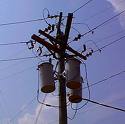
Essentially, the distribution charge, comprised of both fixed and variable components, represents the utility’s cost recovery strategy for installing a standard connection, which the standard demand customer does not have to pay for up front. Generators are, however, expected to pay the full cost of the connection upfront. Hydro One is apparently planning to apply the demand charge to the generator’s own demand, despite the fact that the generator will not in practice be drawing his peak demand from elsewhere, but generating it himself locally. This would arguably amount to generators double paying for the cost of their connection – paying upfront as well as per billing period thereafter. This aspect of the cost structure would make a very significant difference to the economics of AD projects.
Designing AD projects to include handling off-farm high-energy waste streams would make projects viable at a lower price per kilowatt hour for the electricity sold. However, attempting to obtain permission to process off-farm materials opens another regulatory can of worms.
Zoning and Taxation Obstacles
Property tax assessments are under the control of municipalities, meaning that tax liabilities as a result of changes in land use can vary. Although the OPA currently only advises potential generators to contact their local municipality for details, they have previously advised prospective generators that establishing a grid connection for the purpose of selling electricity is likely to result in the farm being zoned industrial and taxed accordingly.
In addition, the inclusion of off-farm wastes in the project design is likely to result in rezoning of the farm as a waste disposal site by the municipality, even though the materials to be handled would mostly be harmless food wastes. As rezoning is a process open to public consultation, and the label of ‘waste disposal site’ is an emotive one, the opportunity for local opposition to develop would be considerable. The level of regulation, and therefore the cost, would increase substantially, assuming the project was allowed to proceed at all.
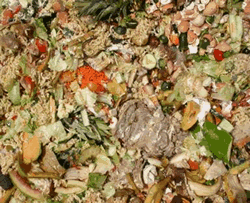
Food Waste
Environmental Obstacles
AD based on the use of co-substrates requires certificate of approval from provincial Ministry of the Environment (MOE). However no regulations have been developed to deal with the situation despite on-going discussions since 2005 between the MOE and OMAFRA. To date, OMAFRA has agreed to fund, at significant cost, a waste pasteurisation facility and a gas flare at one prospective site in order to gain approval. Despite these concessions – the cost of which will have to be built into the project funding for all subsequent projects as OMAFRA will only cover the first one – a certificate of approval has yet to be issued for any project.
It is likely that legislation will be required in order to establish an appropriate regulatory framework for AD with co-substrates. However, such legislation would be controversial and is unlikely to be introduced in the run up to the Ontario provincial election due in the fall of 2007. The regulatory delay would therefore be expected to continue for at least another year, if not longer depending on how high a priority the next government places on seeing AD become established.
The Issue of Insurance
Insurers are becoming increasingly sensitive to potential risks and are increasingly likely to impose high premiums on any activity that could be considered unusual. Although AD is an established technology in Europe and has not proven to represent an insurance risk there, the industry here may choose not to take experiences gained elsewhere into account.
Resolving the Regulatory Obstacle Course
The current regulatory impasse is effectively preventing the development of an important technology by withholding permissions and imposing disproportionate costs at every turn. This fractured and contradictory state of affairs clearly does not serve the interests of Ontario. Although there are informal working groups attempting to diffuse the various conflicts between the priorities of the different bureaucracies involved, it is unlikely that a full resolution will be possible in the absence of political will at the provincial level. The province requires a coherent policy on AD, based on a comprehensive professional assessment of risks and benefits. It needs to integrate the various regulatory strands in order to ensure that the priorities of various regulatory bodies are not in conflict and that the overall regulatory burden is reasonable.
